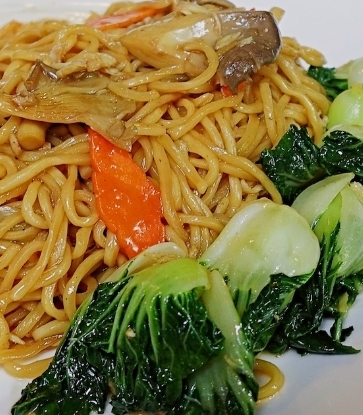Chef Mango Tsang from Dynasty Garden said winter is the best time to taste the fungus.
“As the weather gets dry in autumn and winter, different types of double-boiled soups and sweet soups are the most delicious and nutritious ways to prepare silver ear fungus. It can also be added to vegetarian dishes like Buddha’s Delight or vegetarian stew with fermented bean curd. In the last few years it is getting more even popular as a cold appetiser,” he said.
Silver ear fungus has to been soaked in advance before cooking. Submerge it in cold water for an hour. When the fungus starts to expand, transfer it into warm water for another 15 to 30 minutes. After that, rinse it with boiled and cooled water for a couple of times. Pick out the pieces with dark yellow colour, the hard ones and the ones which didn’t expand. The rest are good to go.

“Everyone has their own preference. If you like it to be more crunchy, you can reduce the soaking time. Conversely, those want to have the fungus tender or near-melting will have to let it sit in the water for longer.”
“Silver ear fungus is often used in double-boiling with chicken and pigeon,” he said, recommending against bold flavour combinations. “The taste of the fungus is rather mild. To cook it with other rich-tasting mushrooms such as morel and porcini would take away the silver ear’s natural fragrance.”
Silkie chicken is another main ingredient in the soup. Tsang noted with chuckles that it’s a bit of a compromise.
“Teals are hard to find nowadays, let alone owls, big-headed turtle, pangolin or gem-faced civet – I saw all these animals in double-boiled soups when I first joined the industry. The most available choices at this moment are chicken, silkie chicken, pigeon, quail and francolin. To be honest, while it’s good to get the wild fowls, I wouldn’t stress if only farm-grown options are available. They aren’t much worse in quality.”

The classic Cantonese double-boiled soup employs a double-boiler, set inside a large pot above water during the process. Tsang added porcelain ware is the most suitable.
“In my opinion, Yixing clay or other fancy materials are more packaging than serving practical purposes. Rather, it’s beneficial to cover the double-boiler with a layer of sandpaper to help it preserve heat. It’s traditional wisdom. Also, a lot of people ask me how long it should take to make double-boiled soup: four hours would be enough,” Tsang said.
For those who fear double-boiled soup carries too much fat, the chef suggests they can use oil-absorbing cooking paper, pass the soup through a cloth, or let the soup cool and skim out the fat as it solidifies.
“Though I think the soup tastes better with a bit of fat in there,” he remarked.

Ingredients
- Silkie chicken (half)
- Jujube (4)
- Silver ear fungus (2 taels)
- Sliced ginger (5 mace)
- Chicken stock (1 litre)
- Rinse and blanch the silkie chicken. Reserve.
- Soak the silver ear fungus in water until soft. Take out the stem.
- Add silkie chicken, jujube, silver ear fungus, ginger and chicken stock in the double-boiler.
- Cook on low heat for four hours. Season to taste and serve.
- To keep the silver ear fungus more crunchy, let all other ingredients cook for two hours before adding the fungus.





















